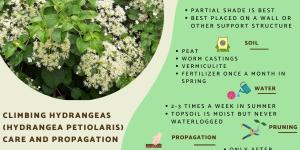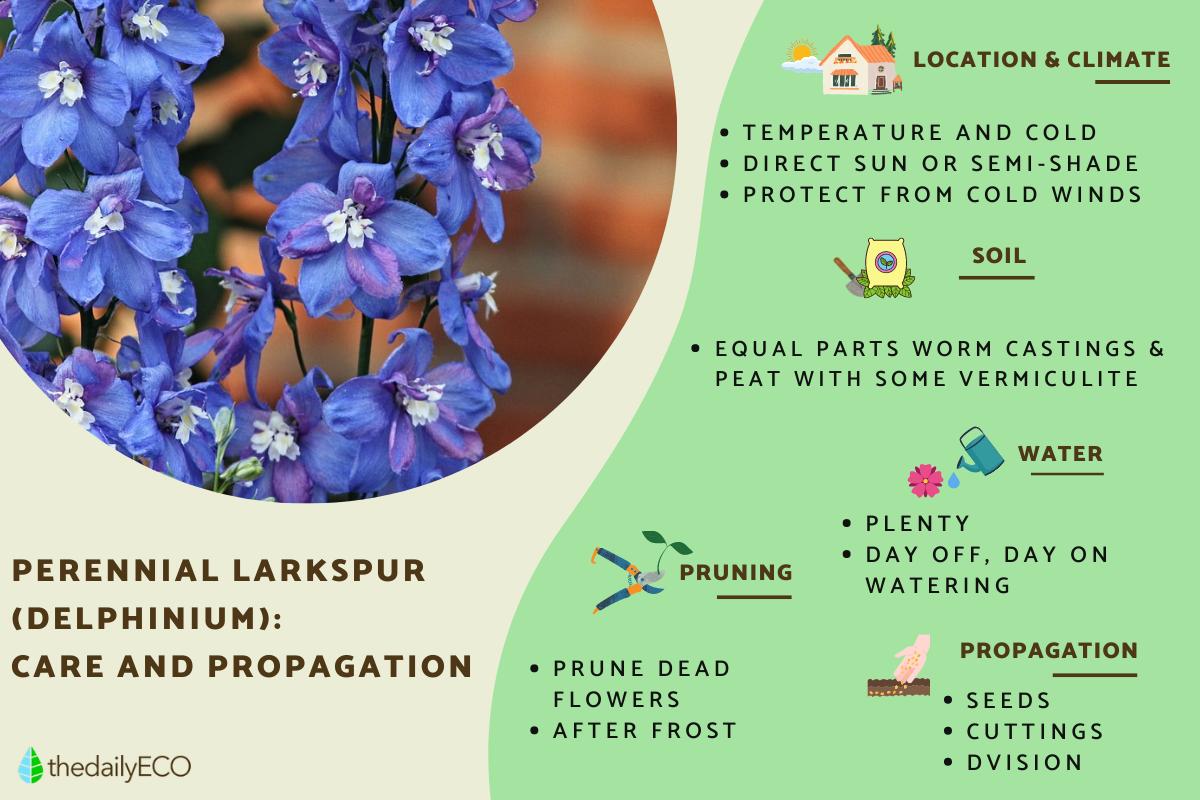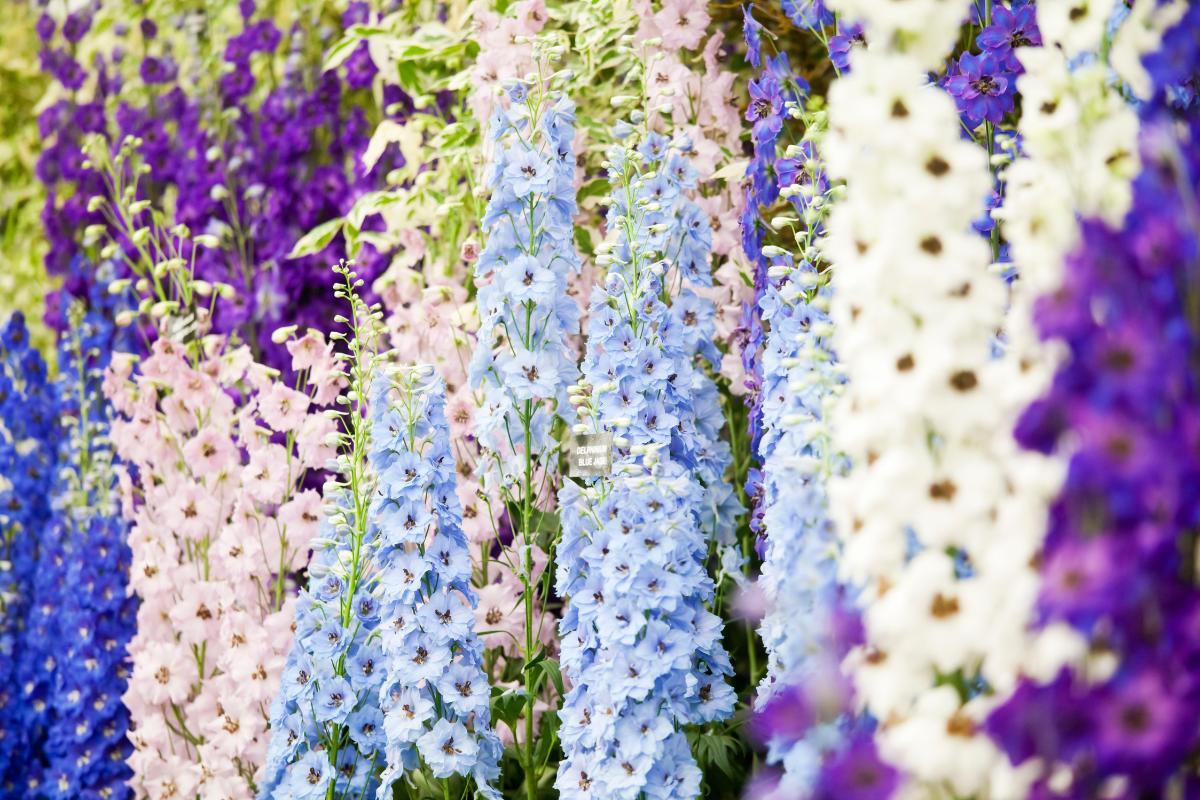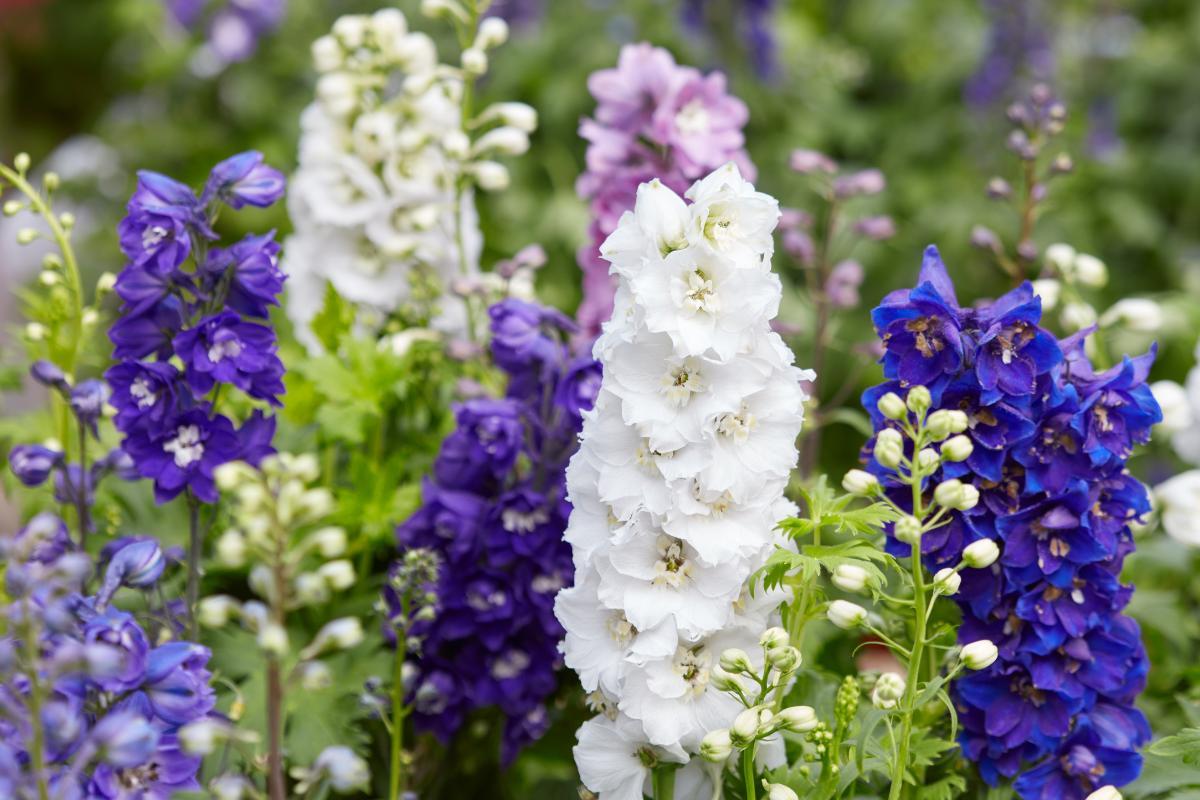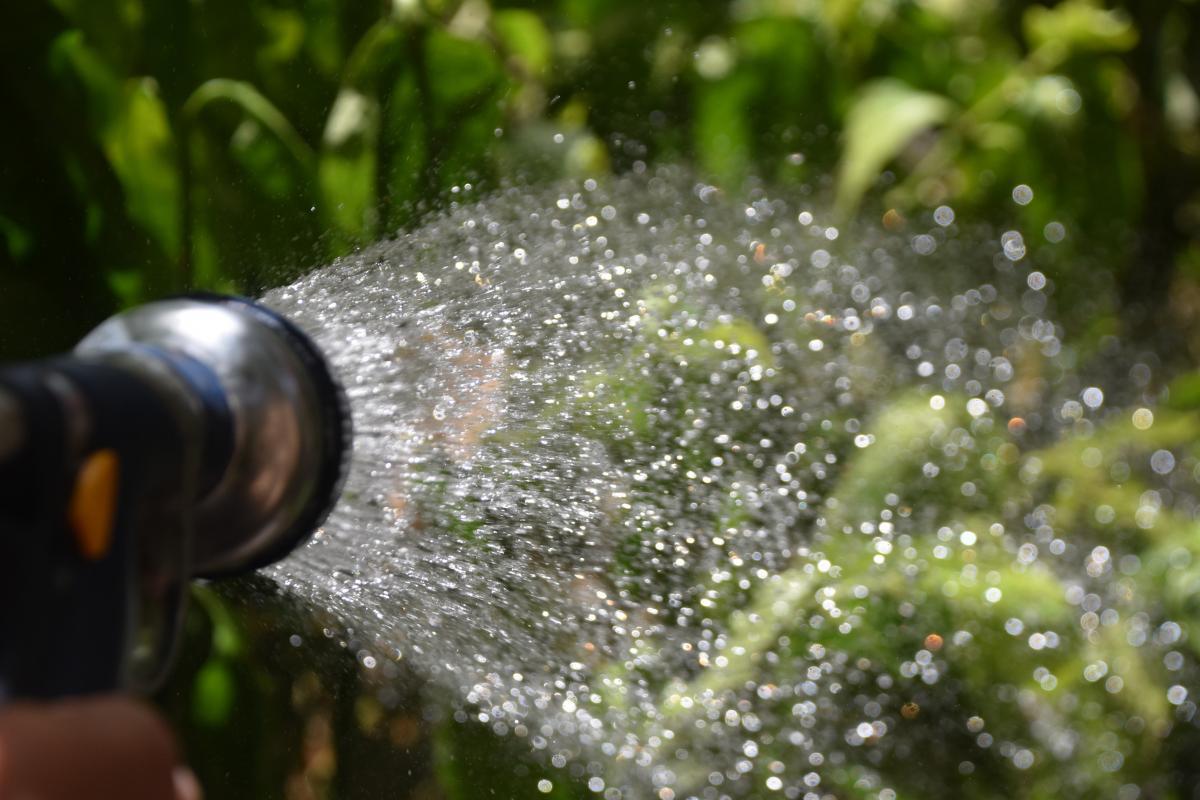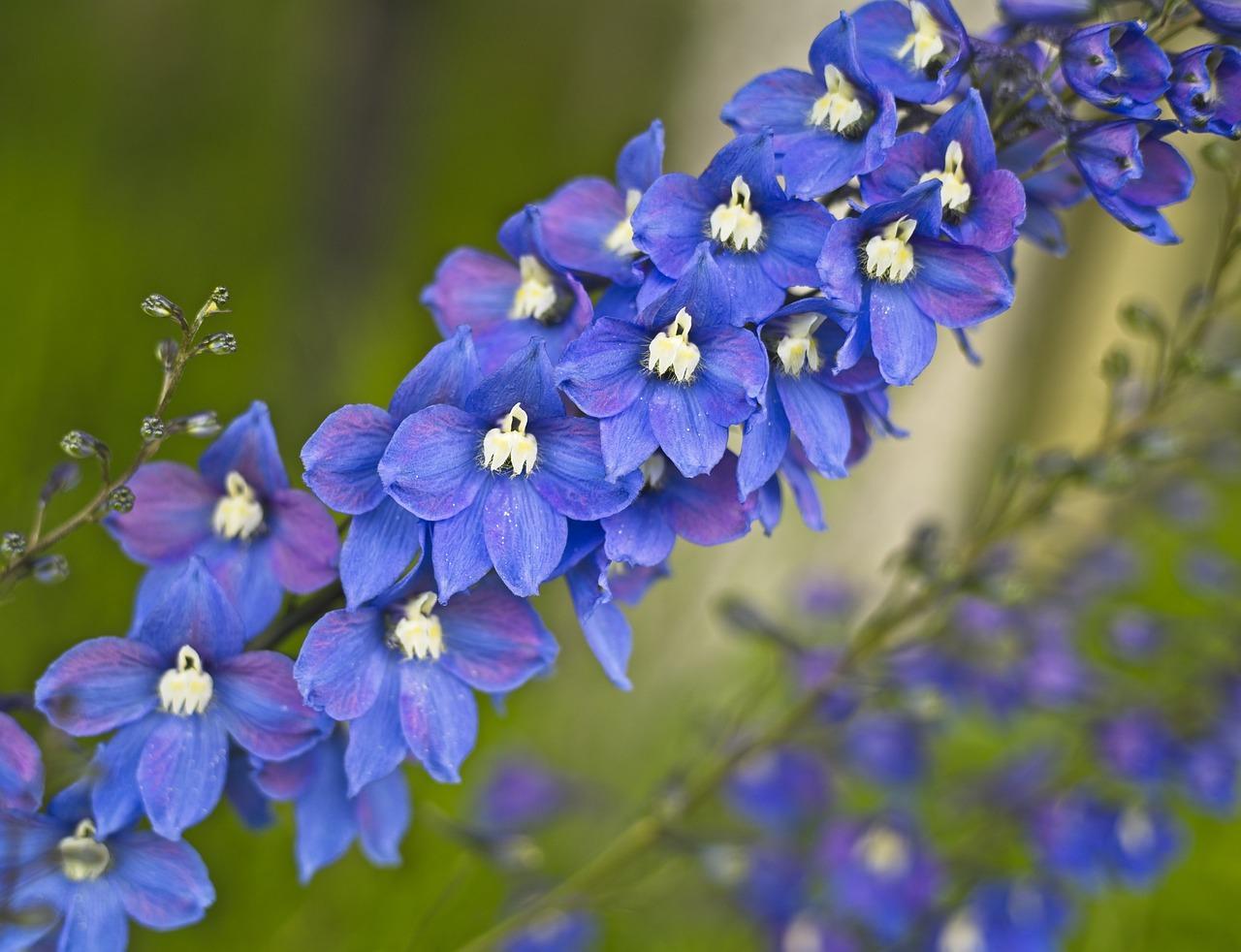Perennial Larkspur Flower Care - Delphinium Care Guide


Perennial larkspur is the common name for flowering plats within the genus Delphinium. It is not to be confused with plants from the genus Consolida, which are an annual plant with the same common name. The perennial larkspur has flowers which grow in clusters on a long central stem which can be as much as 6.5' (2 m) in height. They should be sown in spring if grown indoors and in the fall for outdoor planting. They are a relatively fragile flowering plant and need a certain level of care.
Although they are not for every gardener, thedailyECO can help you ensure the health of your plant with our perennial larkspur flower care guide. See what Delphinium plants need in terms of light, water, soil and more.
Perennial larkspur characteristics
Before we look at the specifics of their care, we can have a look at some of the main characteristics of perennial larkspur:
- The terminal part of the flowers resembles a medieval knight's spur, hence its common name. These flowers almost always consist of 5 sepals and 4 petals.
- Within the genus Delphinium there are 300 different species with mainly purple colors, but there are also white, pink, green and blue flowers. Some have been developed with varieties with mixtures of colors and double petals.
- The flowers have an erect stalk emerging from the main flower stem. They are arranged in tall clusters densely covered with several flowers. Some species completely cover the stem, but the wilder ones are spaced out. The central flower stalk can grow from 12 " (30 cm) to 6.5' (2 m) in height.
- The flowering season is from summer to autumn (c. June to September).
- They have palmate basal leaves, meaning they resemble a human hand in shape.
- They are short-lived perennials, but can sometimes behave like biennials.
If you want to grow perennial larkspur at home, you can use the link below to buy seeds:

How to plant perennial larkspur
The larkspurs are at their best when they are grown from seed. When purchased already grown they will not reach a good size due to lack of gradual adaptation to the environment. For this reason, we explain what to do when planting delphinium flowers:
- It is better to choose fresh seeds and to mention which variety they are.
- The correct time to sow this plant is between March and April so that it flowers in summer. It is recommended to sow indoors and move outdoors only when any risk of frost has passed. It can also be sown in September, and these will flower in autumn. For this sowing season, it should be done directly on the final soil and in the open air. This fall planting is recommended for areas further south to reach mild temperatures.
- Seeds are placed in a worm casting environment to ensure good germination, and watered constantly to keep the substrate moist but not stagnant. Learn how to make your own worm castings at home.
- Each plant should be 12 to 16 inches apart to consider spaced growth. If possible, avoid placing neighboring plants. The best option is to plant them in individual pots .
Light, temperature and location for perennial larkspur
The following need to be considered when determining where to place your perennial larkspur:
- It is native to the northern hemisphere, and to the high mountains of Africa, which is why it is adapted to temperate and cold climates.
- They need full or partial sun exposure.
- It is recommended that they be protected from wind because they can throw the stems into disorder. It can be placed near a wall or place stakes near the base on which they can lean. This will help the flowering to be excellent.

Fertilizer and soil for perennial larkspur
They need a very deep soil and enriched with vegetable matter because they demand a lot of food. For this a mixture of equal parts of peat, worm humus and manure is prepared. Add a little vermiculite to prevent compaction and promote drainage.
Fertilizer is essential for them to have a good and colorful flowering. This applies to early spring. It is also recommended to place a top layer of compost during the spring.
Larkspur watering
Irrigation is abundant and must be done one day on and one day off. You have to check that the soil is always moist. To do this, you can stick a wooden stick a few cm into the ground near the base of the plant and check if the substrate just below the surface is wet. If some soil comes out stuck and dark it is wet. If dry soil comes out and falls easily from the stick, the substrate is too dry and you have to water again. Make sure that the earth never gets completely dry.
Learn about caring for other plants with our prayer plant care guide.

Pruning perennial larkspur
Larkspur will grow well on its own, but there are some cases when pruning is advised:
- Flowering stems that are beginning to droop are cut back to prevent the plant from wasting energy by cutting at the height of the foliage.
- Another pruning must be done when the frosts pass, cutting the stem 5 centimeters above the ground.
- You have to be careful because larkspur can irritate the skin. It is recommended to always wear gloves and long sleeves when handling it. Wash your hands after touching it.
Look at a plant which does need more regular pruning with our crown of thorns plant care guide.
Perennial larkspur propagation
Apart from using the fresh seeds themselves, it is possible to carry out the reproduction of this plant by division or by cuttings during the summer.
- Division: dig up a bunch of plants from and divide them from the roots. Since it is a rhizomatous plant this method is the easiest. You have to do it carefully to do as little damage as possible. Both pieces are reburied in the final site.
- Cuttings: a completely healthy and vigorous plant is taken and a cut is made from the basal part that bears leaves. This can be soaked in a chemical rooting agent or moved directly into the soil so that it can develop roots there.
It is recommended to divide them by the roots every 3 to 5 years to keep them vigorous. These divisions can be used to reproduce the plant.

Perennial larkspur pests and diseases
Pests to which this plant is susceptible are snails, slugs, aphids and caterpillars. To avoid the first two, it is recommended to manually remove one by one early in the morning. Keep the area clean so birds can eat them or create traps with fruit to attract them and then remove them manually.
For aphids it will be useful to use a natural biological control with ladybugs that eat them. The mulch will prevent caterpillars and slugs from climbing onto the plant. All of these methods avoid the use of strong pesticides.
As for diseases, they can get downy mildew and crown rot. Downy mildew is combated by maintaining a good space between the plants to avoid moisture accumulation and by removing all leaves that have black spots or white powder. Crown rot is common due to the high water demand of this plant, but it is avoided with a good substrate that is not heavy and has good drainage.
Now that you know how to care for larkspur and if you really like this type of flower, we encourage you to learn more plants with blue flowers and purple flowers.
If you want to read similar articles to Perennial Larkspur Flower Care - Delphinium Care Guide, we recommend you visit our Plant care and cultivation category.
- Kreuter, M. L. (2005). Biological garden and orchard. Spain: Mundi-Press Editions.
- Mattus, M. (2020). Mastering the Art of Flower Gardening: A Gardeners Guide to Growing Flowers, from Todays Favorites to Unusual Varieties. United States: Cool Springs Press.
- Martens, J. (2010). Better Homes & Gardens Perennial Gardening. UK: Wiley.


